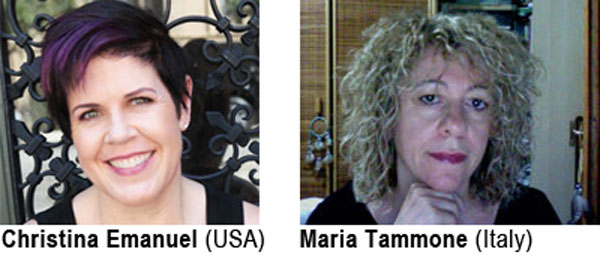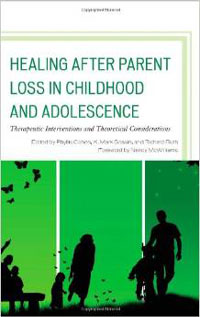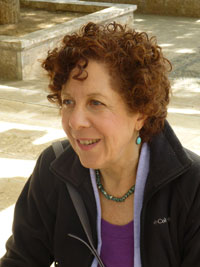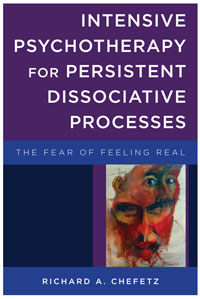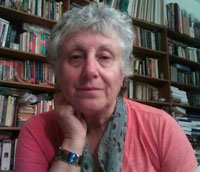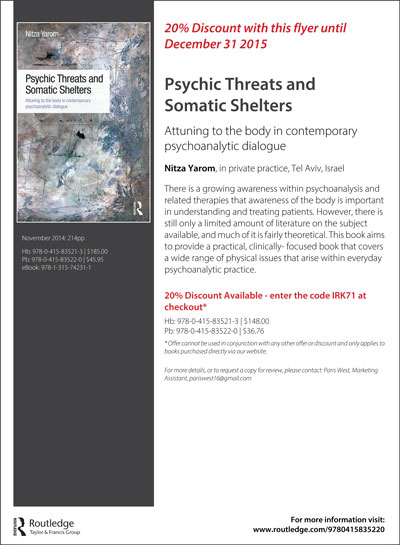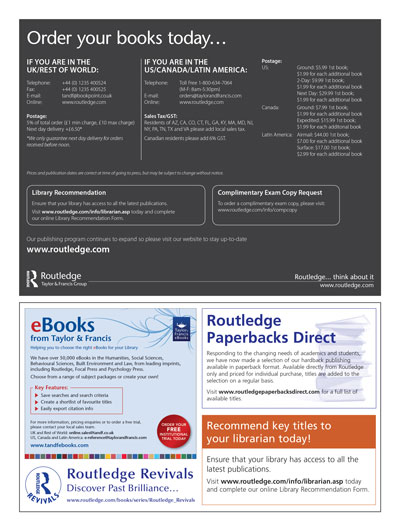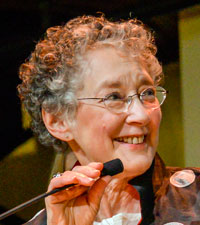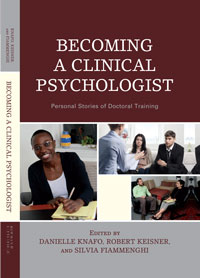Is There an Antidote to Perfectionism?
Thomas Greenspon (USA)
Psychology in the Schools, Vol. 51, No. 9, pgs. 986-998, 2014.
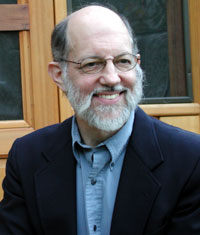 Written by invitation for a special issue on the topic for school psychologists, rather than for a specifically psychoanalytic audience, this paper nevertheless outlines a contemporary relational analytic sensibility concerning the meaning and developmental origins of perfectionism. Based on this, an antidote to perfectionism—an approach to moving past it—is outlined.
Written by invitation for a special issue on the topic for school psychologists, rather than for a specifically psychoanalytic audience, this paper nevertheless outlines a contemporary relational analytic sensibility concerning the meaning and developmental origins of perfectionism. Based on this, an antidote to perfectionism—an approach to moving past it—is outlined.
Link: http://onlinelibrary.wiley.com/doi/10.1002/pits.21797/abstract
Thomas S. Greenspon, Ph.D., LP, LMFT
Minneapolis, MN
email: Thomas Greenspon
Back to top
 “Don’t Step on Tony!”
“Don’t Step on Tony!”
The Importance of Symptoms When Working with Psychosis
Danielle Knafo (USA)
Danielle Knafo, and Michael Selzer, Psychoanalytic Psychology, Vol. 32, No. 1, 2015.
 This paper claims that the attention to a patient’s symptoms is critical when working with psychotic states. It asserts that viewing symptoms as a crucial inroad into the understanding of the patient’s issues is often disregarded in today’s mental health environment, which focuses almost exclusively on the elimination of symptoms with medication. The authors regard symptoms as presenting a vital inroad into the working relationship with persons suffering psychosis. A detailed case illustration is presented to demonstrate the way working with symptoms gives credibility to the patient’s reality and aids in creating a working alliance and in moving the treatment forward.
This paper claims that the attention to a patient’s symptoms is critical when working with psychotic states. It asserts that viewing symptoms as a crucial inroad into the understanding of the patient’s issues is often disregarded in today’s mental health environment, which focuses almost exclusively on the elimination of symptoms with medication. The authors regard symptoms as presenting a vital inroad into the working relationship with persons suffering psychosis. A detailed case illustration is presented to demonstrate the way working with symptoms gives credibility to the patient’s reality and aids in creating a working alliance and in moving the treatment forward.
Link: http://dx.doi.org/10.1037/a0038488
Danielle Knafo, PhD
email: Danille Knafo
website: http://www.danielleknafo.com
blog: http://www.seriousmentalillness.net
blog: http://artfromtheedge.net
Back to top
 The Two Analyses of Mr. X:
The Two Analyses of Mr. X:
Two Analytic Voices and the Emergence of Something New
Carol Levin (USA)
Psychoanalytic Inquiry, Vol. 35, No. 3, 2015.
 In a bridging session after the sudden death of his analyst, I realized that Mr. X and I were both grieving for her. V had been my teacher, supervisor, and friend, and I knew her analytic voice from the inside. I heard it in my consulting room not only in Mr. X’s words but also in his relational patterns and expectations as they emerged as we moved along. Hearing V’s voice stand in such stark contrast with mine led me to reconceptualize our venerable concept of analytic voice from within contemporary psychoanalytic theory. My analytic voice freed Mr. X from V’s complex constraints, and my experience as Mr. X’s analyst unexpectedly came to free me. I have come to understand analytic voice as an emergent property of a complex dynamic system.
In a bridging session after the sudden death of his analyst, I realized that Mr. X and I were both grieving for her. V had been my teacher, supervisor, and friend, and I knew her analytic voice from the inside. I heard it in my consulting room not only in Mr. X’s words but also in his relational patterns and expectations as they emerged as we moved along. Hearing V’s voice stand in such stark contrast with mine led me to reconceptualize our venerable concept of analytic voice from within contemporary psychoanalytic theory. My analytic voice freed Mr. X from V’s complex constraints, and my experience as Mr. X’s analyst unexpectedly came to free me. I have come to understand analytic voice as an emergent property of a complex dynamic system.
Link: http://www.tandfonline.com/toc/hpsi20/current#.VNoZv748pUQ
Carol B. Levin, MD
2147 Commons Parkway
Okemos, MI 48864
email: Carol Levin
Back to top
 Grief and Reason: A Response to Kandel’s “Age of Insight”
Grief and Reason: A Response to Kandel’s “Age of Insight”
Billie Pivnick (USA)
The Psychoanalytic Quarterly, Vol. 84, No. 1, 2015.
 If, as Freud thought, symptoms are a means of exchange within families and speak of a patient’s secret desires, a listener need only translate those signs and their opposition into language. Dialogical storytelling itself becomes a form of biology, one that helps humans prevail against the forces of entropy through retranscription of memory. But what of distress that has its origins in preverbal development or in response to traumatic events that disconnect semantic memory systems from procedural ones? Might not understanding how art tells stories elucidate the emotional, cognitive, and intersubjective aspects of implicit communication and empathic attunement so central to the psychoanalytic method? Eric Kandel’s book, The Age of Insight: The Quest to Understand the Unconscious in Art, Mind, and Brain from Vienna 1900 to the Present, unfurls such a story about implicit storytelling – touring terrain inspired by a unique intersection of art, science, and politics in the earliest days of the modern age in the city that was modernism’s capital.
If, as Freud thought, symptoms are a means of exchange within families and speak of a patient’s secret desires, a listener need only translate those signs and their opposition into language. Dialogical storytelling itself becomes a form of biology, one that helps humans prevail against the forces of entropy through retranscription of memory. But what of distress that has its origins in preverbal development or in response to traumatic events that disconnect semantic memory systems from procedural ones? Might not understanding how art tells stories elucidate the emotional, cognitive, and intersubjective aspects of implicit communication and empathic attunement so central to the psychoanalytic method? Eric Kandel’s book, The Age of Insight: The Quest to Understand the Unconscious in Art, Mind, and Brain from Vienna 1900 to the Present, unfurls such a story about implicit storytelling – touring terrain inspired by a unique intersection of art, science, and politics in the earliest days of the modern age in the city that was modernism’s capital.
Link: http://onlinelibrary.wiley.com/doi/10.1002/j.2167-4086.2015.00009.x/full
Billie A. Pivnick, PhD
Clinical Psychologist
Faculty and Supervisor, William Alanson White Institute, Child and Adolescent Psychotherapy Training Program
Faculty, New Directions Program in Writing with a Psychoanalytic Edge, Washington Center for Psychoanalysis, Washington, DC
Private Practice:
15A East Tenth Street
New York, NY 10003
email: Billie Pivnick
Back to top
 Fear of Attachment, Ruptured Adult Relationships,
Fear of Attachment, Ruptured Adult Relationships,
and Therapeutic Impasse
Thomas Rosbrow (USA)
Attachment: New Directions in Psychotherapy and Relational Psychoanalysis, Vol. 8 No. 10. November 2014,
 When patients enter therapy following ruptures with an idealized other – whether therapist, lover, or spiritual teacher – their fear of being retraumatized and betrayed creates difficulties in attaching to the new therapist. Initially, the patient will appear distant and unrelated, making it hard for the therapist to find her bearing without clear affective clues. This can lead to momentary or longer lasting impasses. The concept of disorganized attachment is useful as a model for picturing the bind the patient feels of wanting to depend on someone, while being simultaneously frightened of being injured. A therapeutic sequence is described from seeming unrelatedness in the therapeutic relationship, to a more actively negative phase, where the trauma just prior to the onset of therapy is reenacted, to a final phase where the therapeutic relationship can be more fully established, and the therapist seen in three-dimensional depth. The therapist is challenged to bear, and elaborate, the patient’s disappointment, criticism, and rejection, in the context of the recent ruptured relationship. There is an eventual shift in the patient from a state of psychic equivalence, where the patient’s unhappiness with the therapeutic relationship is believed to be simply a reflection of failings in the therapist, to a growing capacity to play with reality, and to realize a more full complex picture of the therapist, the therapeutic relationship, and the relational world.
When patients enter therapy following ruptures with an idealized other – whether therapist, lover, or spiritual teacher – their fear of being retraumatized and betrayed creates difficulties in attaching to the new therapist. Initially, the patient will appear distant and unrelated, making it hard for the therapist to find her bearing without clear affective clues. This can lead to momentary or longer lasting impasses. The concept of disorganized attachment is useful as a model for picturing the bind the patient feels of wanting to depend on someone, while being simultaneously frightened of being injured. A therapeutic sequence is described from seeming unrelatedness in the therapeutic relationship, to a more actively negative phase, where the trauma just prior to the onset of therapy is reenacted, to a final phase where the therapeutic relationship can be more fully established, and the therapist seen in three-dimensional depth. The therapist is challenged to bear, and elaborate, the patient’s disappointment, criticism, and rejection, in the context of the recent ruptured relationship. There is an eventual shift in the patient from a state of psychic equivalence, where the patient’s unhappiness with the therapeutic relationship is believed to be simply a reflection of failings in the therapist, to a growing capacity to play with reality, and to realize a more full complex picture of the therapist, the therapeutic relationship, and the relational world.
Link: http://karnacbooks.metapress.com/content/0724525268t1180j/?p=e9b27ba7a4824c73a6b3e7a9e1753e3d&pi=0
Thomas Rosbrow, PhD
2001 Union St, #630
San Francisco, CA 94123
email: Thomas Rosbrow
Back to top
 The Analyst as Muse: The Expansive Dimension of the Transference
The Analyst as Muse: The Expansive Dimension of the Transference
Penelope Starr-Karlin (USA)
International Journal of Psychoanalytic Self Psychology, Vol. 10, No. 1, 2015.
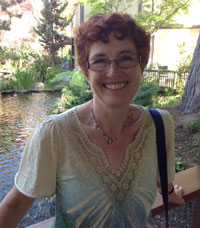 A new “muse transference,” which animates creativity and an “expansive” dimension, distinct from the developmental and repetitive dimensions of transference, is introduced. The expansive dimension is differentiated because it is influenced by the subjectivity of the analyst and is emergent from contemporary contextual possibilities.
A new “muse transference,” which animates creativity and an “expansive” dimension, distinct from the developmental and repetitive dimensions of transference, is introduced. The expansive dimension is differentiated because it is influenced by the subjectivity of the analyst and is emergent from contemporary contextual possibilities.
Link: www.tandfonline.com/doi/abs/10.1080/15551024.2015.977484?journalCode=hpsp20#preview
Penelope Starr-Karlin, PsyD, MFT
email: Penelope Starr-Karlin
Back to top

